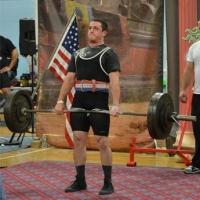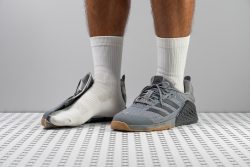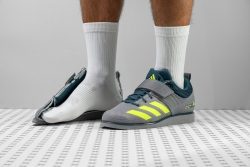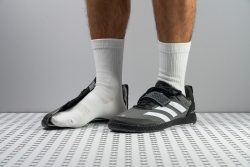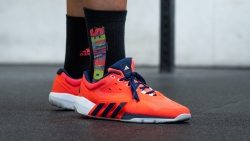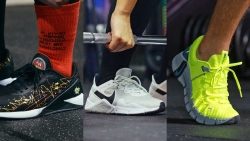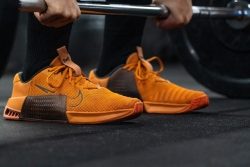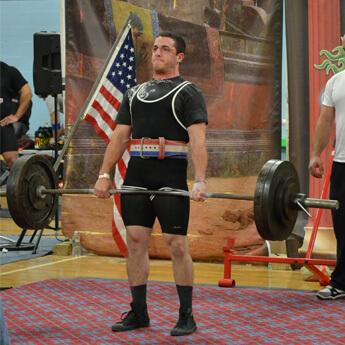3 Best Adidas Training Shoes in 2025
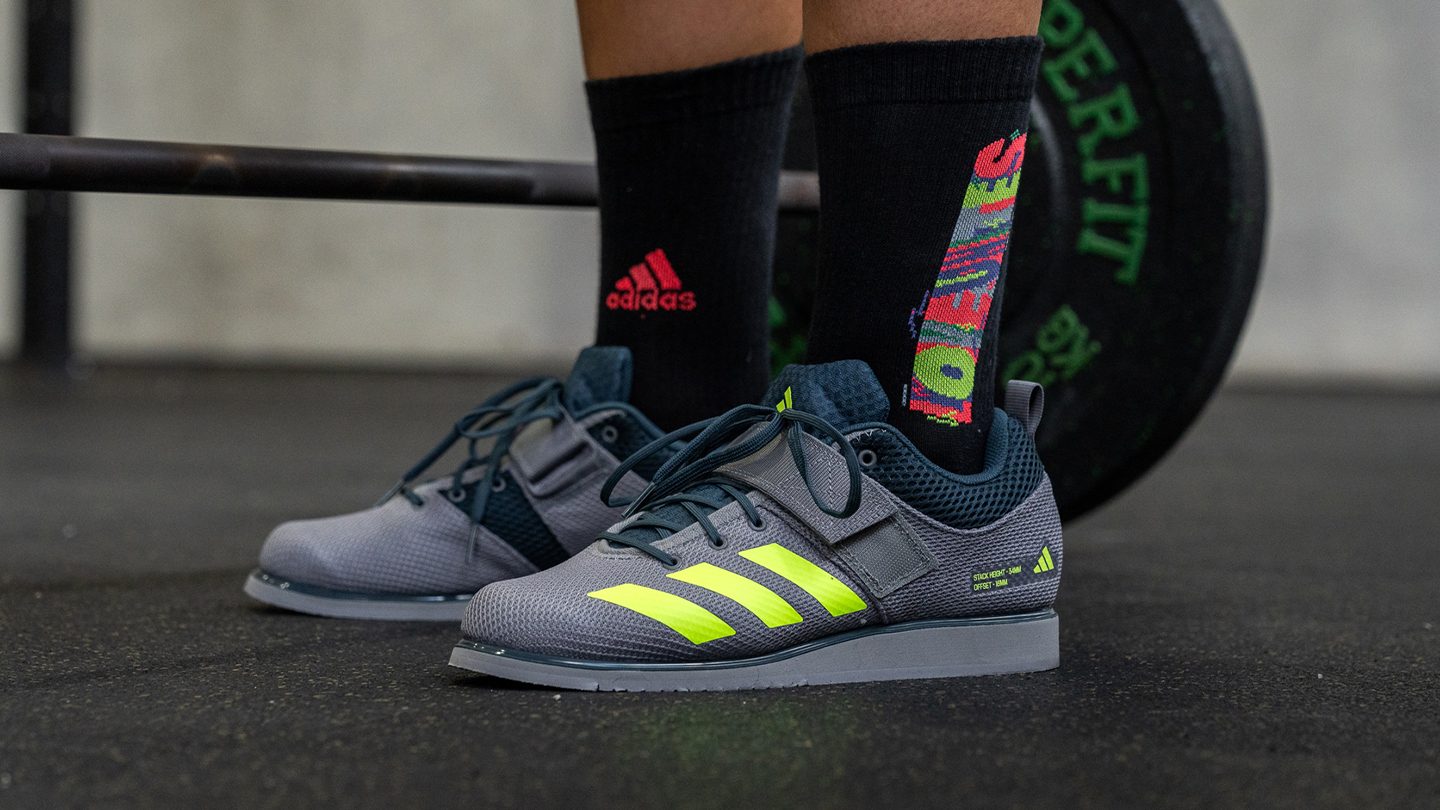
We buy shoes ourselves. We earn commissions when you buy through us, at no extra cost. Why trust us
From powerlifting to all-around trainers, Adidas offers some of the superbly high-quality training shoes in the business. As a trusted brand in the athletic footwear industry, you can be sure to get genuine value from the company’s latest offerings of training kicks.
To get you started, we’ve rounded up, tested, and ranked all the best Adidas training shoes available. Take a peek at our top picks below.
How we test Adidas training shoes
Before making our recommendations, each pair of shoes in our repertoire is put to the wear tests. That means subjecting the training shoes to the daily rigors of gym workouts and training exercises. We check the shoe materials and how they fit, feel and perform.
Below are the following protocols that we do:
- We buy the Adidas training shoes for our wear test sessions with our money to avoid any brand sponsorships, contracts, or bias.
- We test each model in our routine workouts to determine their comfort level, breathability, traction, stability, arch support, etc.
- After putting in the training, we take the shoes to the lab where we cut them in half, measure and assess their durability, breathability, energy return, shock absorption, traction, and outsole hardness. We end up with more than 20 parameters that precisely describe the shoe.
Best Adidas training shoes overall
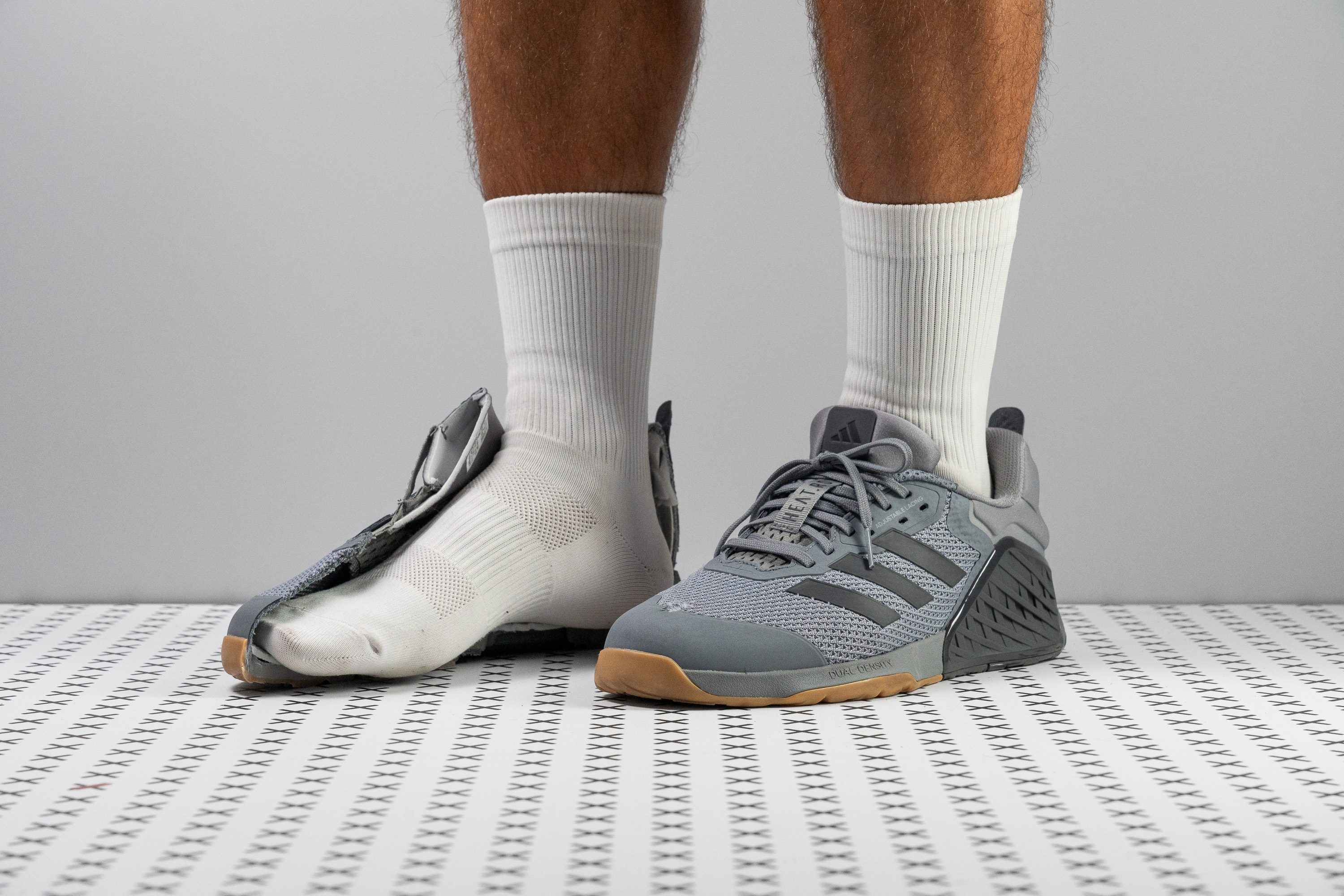





















































What makes it the best?
Our lab analysis and gym sessions show Adidas dropped its best-ever training shoe—the Dropset 3. We felt stable and supported on leg days and fluid enough for HIIT workouts. Its unmatched breathability for sweaty sessions is the cherry on top. Striking a good balance between firm and free-flowing elements, it's a very reliable trainer.
We found the wide and grounded platform suitable for lifting. We cut the shoe open and discovered its heel is hardly compressible—enhancing stability when pushing off or catching a loaded barbell. Our shock absorption test reveals a below-average 73 SA rating in the heel, which shows its focus on heightened surface feedback. Meanwhile, the wide 116.9/88.9 mm midsole kept us well-planted to the ground.
When we moved to lunges, burpees, and other floor workouts, it bends without much resistance. Our flex test confirms it’s 25.2% more flexible than average. We felt in control of our quick movements thanks to the grippy Adiwear outsole, which impressed with a 0.39 score in our traction test.
We can’t think of a trainer that's more breathable than Dropset 3. Its excellent ventilation blew our minds with its HEAT.RDY technology. Consisting of a large hole in the shoe’s sole, the wind goes in, and our body heat goes out.
This trainer feels clunky for runs with its 12.1 oz (343g) weight. Those who incorporate lots of runs in their routine should find a more shock-absorbing pair.
Pros
- Exceptional stability for lifting and lateral movements
- Very wide and grounded platform
- Extra durable and grippy outsole
- Very secure foothold
- Flexible enough for plyometrics
- Fantastic breathability
- Accommodating toebox
Cons
- Not great for running and walking (clunky heel)
- Can't be worn outside because of sole apertures
Best Adidas training shoes for weightlifting
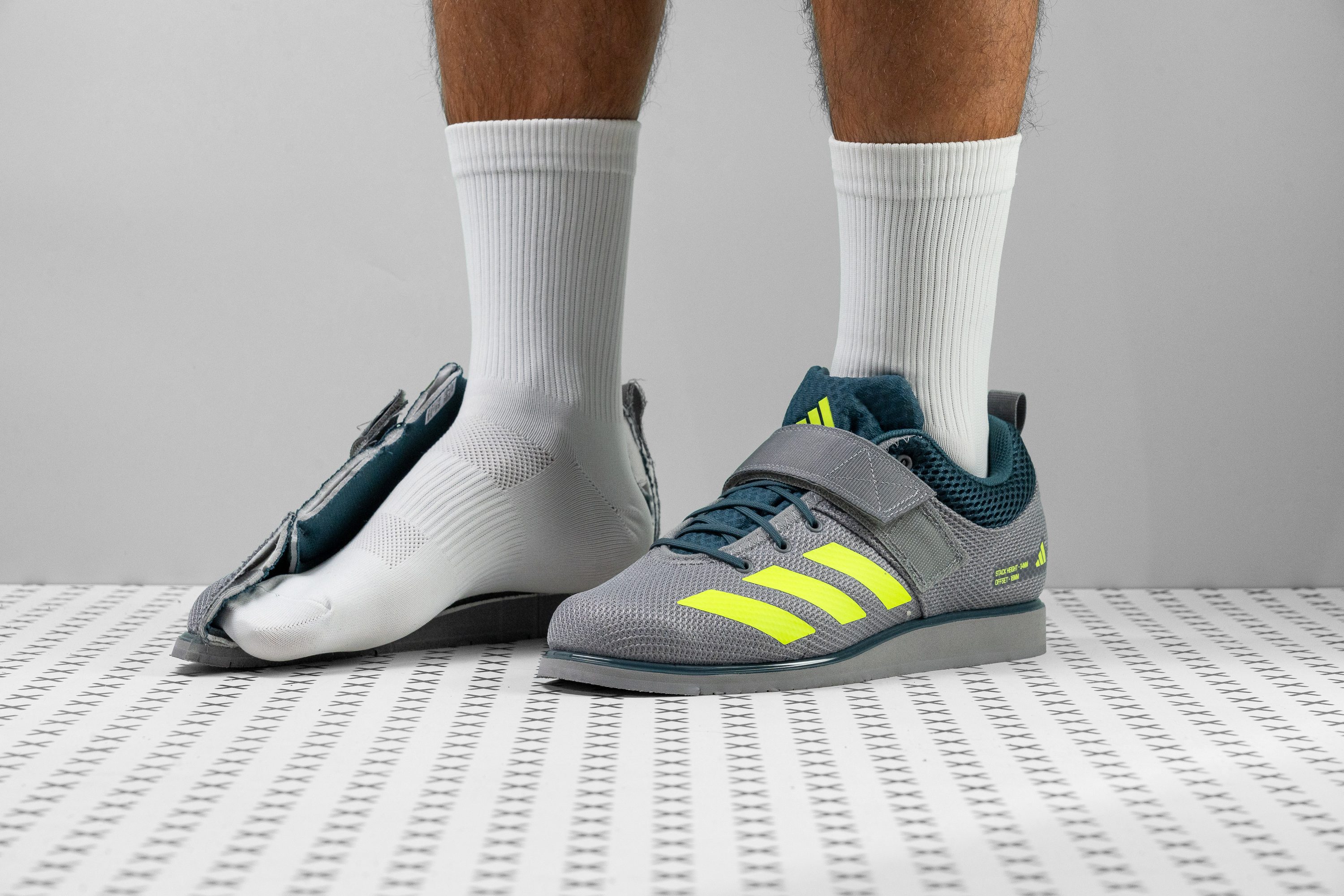













































What makes it the best?
The Adidas Powerlift 5 has lived up to its name, and we now consider it the best for weightlifting in Adidas’s arsenal. Its heel counter dependably held the rear part of our feet in place, helping us maintain a firm upright position as we do squats and deadlifts. The base of the shoe is immensely resistant to twists, effectively reducing our worries. What’s interesting is that this shoe delivered all of these big benefits without adding so much weight.
We felt the stiffness of the heel counter the moment we put this shoe in. We confirmed our initial observation after we manually squeezed it in the lab. The heel counter got a perfect 5 for stiffness.
The shoe’s base both looked and felt firm upon wearing. When we subjected it to manual aggressive twists in the lab, we felt its resistance. Hence, we were left with no other choice but to give it a 5 out of 5 for torsional resistance.
We were shocked to learn that the Adidas Powerlift is actually 3.7 ounces or 105 grams lighter than the average trainer. It’s insane to think that something that’s so firm can be so light.
The breathability of the upper was a source of some discomfort. There just was not enough air going in and out of the shoe. Upon checking the toebox material under the microscope, we saw how tightly woven it was that there was literally no space for air to pass through. We only gave the upper a 2 (instead of 1) out of 5 for breathability because of the mesh tongue.
Pros
- Stable base for moderate lifting
- Good for accessory exercises
- Solid bite on gym floors
- Secure foothold
- Supportive Velcro strap
- Reasonably priced
- Contains sustainable materials
Cons
- Lacks breathability
- Upper is not very durable
- Tongue shifts
Best Adidas training shoes for deadlifting















































What makes it the best?
Among Adidas trainers we hit the gym with, Adidas The Total offers the best zero-drop experience for deadlifts. Its firm and low platform heightens ground feel, while its wide toebox and grippy sole ensure stability. Our lab analysis shows its sturdy build effectively supports weightlifting and strength exercises.
With no drop and low stack height, The Total makes us extra sensitive to surface feedback, therefore improving our control. Our caliper reveals a below-average 12.5 mm stack, which our durometer shows is 44.4% firmer than average. These elements further stabilize our stance and help us control our movements.
With a strap that firmly locks us down, we remain planted to the ground during our lifts. The accommodating platform allows our toes to splay naturally for better balance. Our caliper confirms a wider-than-average toebox, especially in the 86.5 mm big toe area. This inspires confidence and surefootedness as we lift heavier weights.
Underfoot, we confirm the shoe’s tread offers dependable traction on gym floors, concrete, and hardwood. It avoids any slips or injuries. Being firmly planted in the ground allows us to use the right group of muscles for the correct form.
Unfortunately, Adidas The Total is not the total package since it lacks breathability. We couldn’t wait to get out of the shoes during heated workouts, and our lab confirms a subpar 2/5 ventilation score.
Pros
- Ideal for deadlifting
- Great traction
- A lot of ground feel
- Plenty of toebox space
- Lightweight and comfortable
- Fairly priced
- Streamlined look
Cons
- Not so much breathability
- Not for heavy squats
Buyers' guide on Adidas training shoes
Famous for its iconic weightlifting shoes, Adidas has also been catching up with some pretty impressive cross-training shoes. But how do you know which Adidas shoe is best for your training needs?
We’ve put together this comprehensive best buyer's guide so you can choose with confidence.
An overview of training shoes from Adidas
The first thing to consider is of course the type of workout that you are planning to do in your Adidas trainers. Here is a quick overview of various training shoe series from Adidas and what they are intended for:
| Shoe | Best for |
| Adidas Dropset Trainer | cross-training, Crossfit, light-to-moderate weightlifting |
| Adidas Powerlift | light-to-moderate weightlifting |
| Adidas Power Perfect | moderate-to-heavy weightlifting |
| Adidas Adipower | heavy/competitive weightlifting |
What to look for in Adidas training shoes
Narrowing down your options, you should also pay attention to a number of parameters such as:
- heel height
- cushioning (or stiffness, for lifting shoes)
- support
- durability
- breathability
- fit
Making sure you've got these tuned to your demands will result in the best workout experience in your future Adidas trainer.
Heel height
If you are choosing an all-around cross-trainer, the can range from 4 mm to 8 mm. The former will make you feel more grounded and in control while the latter will add more impact protection in the heel for high-impact exercises.
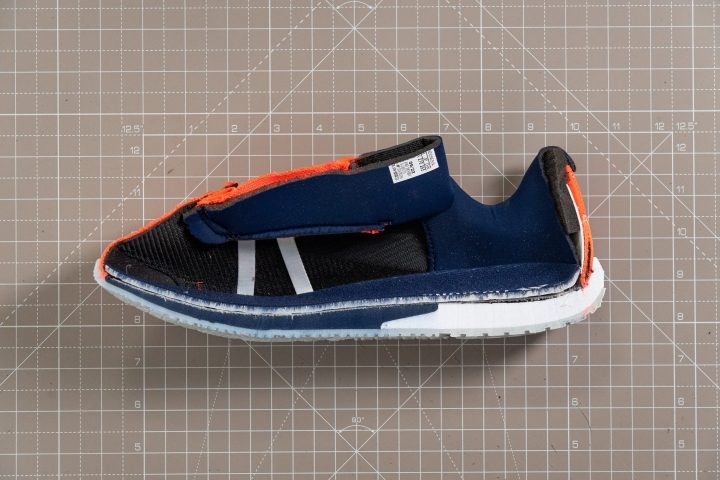
In weightlifting shoes, the lowest drop starts at 15 mm and is considered best for entry-level athletes who are only getting used to the elevated heel.
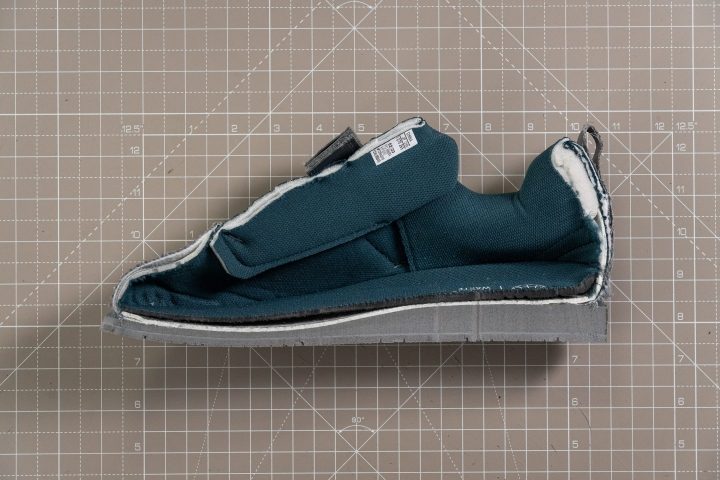
The higher drop of 19 mm (Adidas Power Perfect) and 22 mm (Adidas Adipower) are chosen by the more seasoned athletes as it helps to improve posture for squats. When the heel is placed high above the toes, it takes the pressure off the ankles and creates more ergonomic angles in the knees and hips. This results in a more upright torso and improved lifting performance.
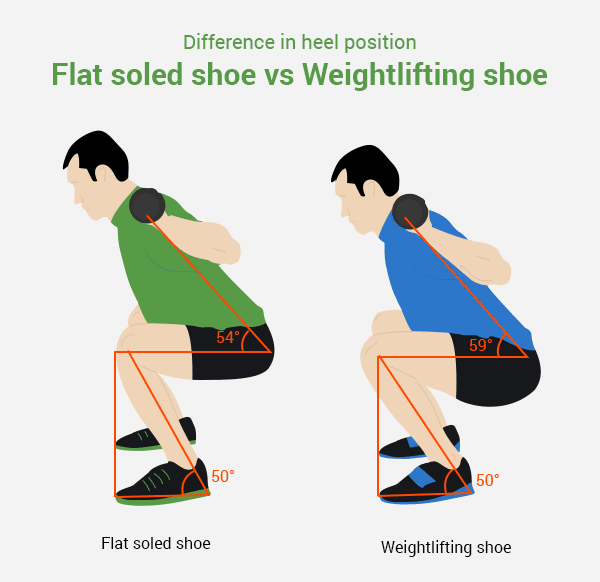
However, some athletes do prefer flat-soled lifting shoes for deadlifts. Especially those with strong and flexible ankles. They tend to choose flat-soled shoes like the Converse Chuck Taylor. In response to that, Adidas released a zero-drop lifting shoe in 2023, called the Total.
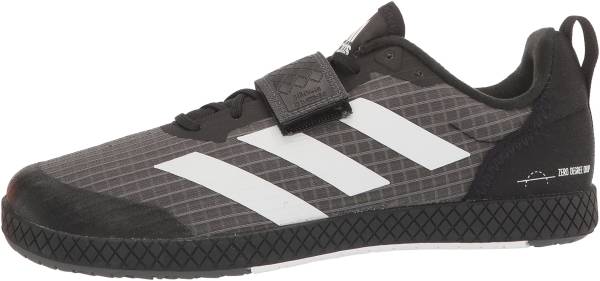
You can learn more about how different shoe types affect weightlifting performance in our comprehensive guide on the topic.
Cushioning/Stiffness
If you are going for a cross-trainer, you want to make sure there is enough cushioning to support your HIIT and cardio sessions. In our lab, we measure two parameters to assess the shoe's cushioning: stack height and softness.
- The typical stack height of an Adidas cross-trainer is 25 mm in the heel. It provides the right balance of impact protection and ground feel to make sure you feel in control of various movements. However, you may come across shoes with thicker soles. Most of the time, these are better for running-oriented workouts.
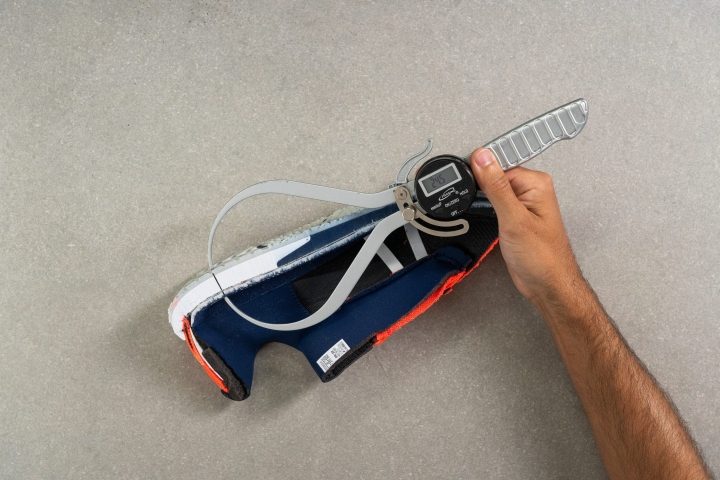
- The cushioning foam also tends to be firm in Adidas trainers. We measure each one with a durometer to let you know if it is softer or firmer than average.
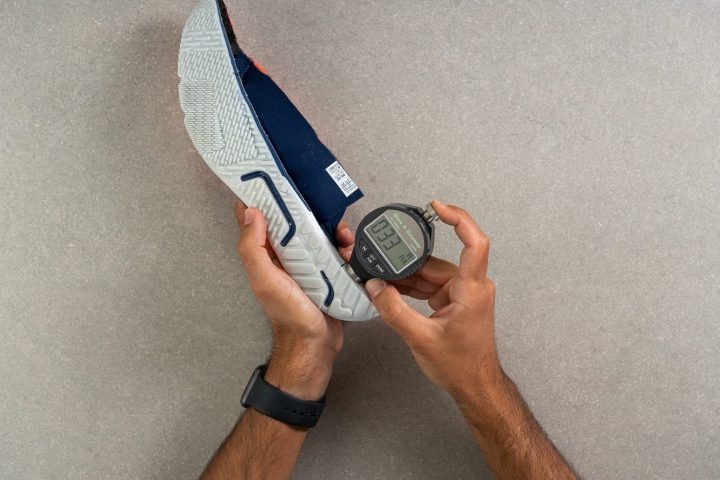
In weightlifting shoes, it is simple: you are looking for a platform that doesn't compress at all. That often means an extra firm TPU platform.
For beginners dealing with weight lower than 350 pounds, it's okay to go with a cheaper lifting shoe made with compressed EVA. There is a tiny bit of give there but not enough to make you wobble.
Example of a compressed EVA platform
Support
You must feel strong side support in a training shoe to go full force in your workouts. This is especially important for dynamic sessions with lots of multi-directional movements. That's why Adidas training shoes often come with additional sidewalls to keep the foot in place.

In our lab, we also assess how stiff the shoe's heel counter is. It has a direct impact on how supported the ankle is.
This shoe has an average heel counter stiffness (3 out of 5)
Weightlifting shoes from Adidas always have more support than cross-trainers. They feature sturdy leather or canvas uppers, wide soles, and extra stiffness for stability.
This shoe has the stiffest heel counter (5 out of 5)
Durability
We use a Dremel to test how wear-resistant various parts of Adidas training shoes are.
Based on the amount of damage that the Dremel causes to the material, each shoe gets a durability rating of 1 to 5.
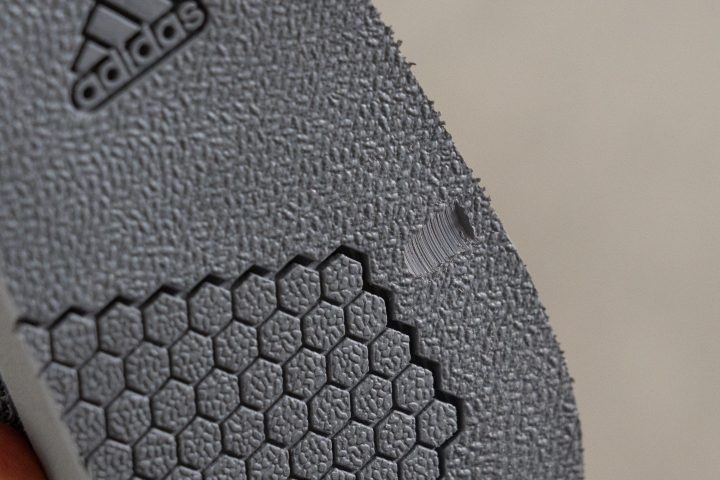
Breathability
When your toes are nice and fresh, it definitely helps you work out longer and more efficiently. We put each Adidas shoe through a smoke-pumping machine test to assess its ventilation. That way, we help you to rule out the toasty options even when shopping online!
Fit
Look for a shoe that fits your foot snugly, but not too tightly in the toe area. You should be able to naturally splay your toes without hitting the upper material. The upper should also have a stabilizing framework to hold the foot in place during intense training.
We provide detailed information on the fit of each Adidas trainer in our in-depth reviews.
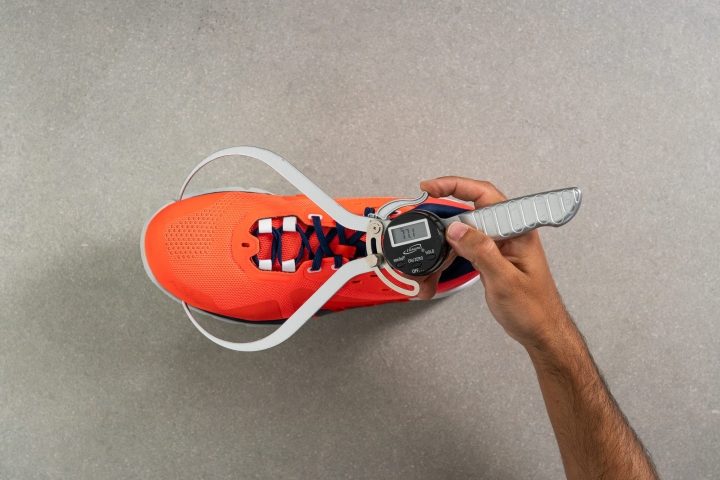
Why choose Adidas training shoes?
Adidas has a long history of creating dependable, high-quality athletic equipment that has been tried and trusted by athletes all over the world. The company is dedicated to technological advancement and innovation, so every new model of training shoe is created with the most recent developments in performance-enhancing features.
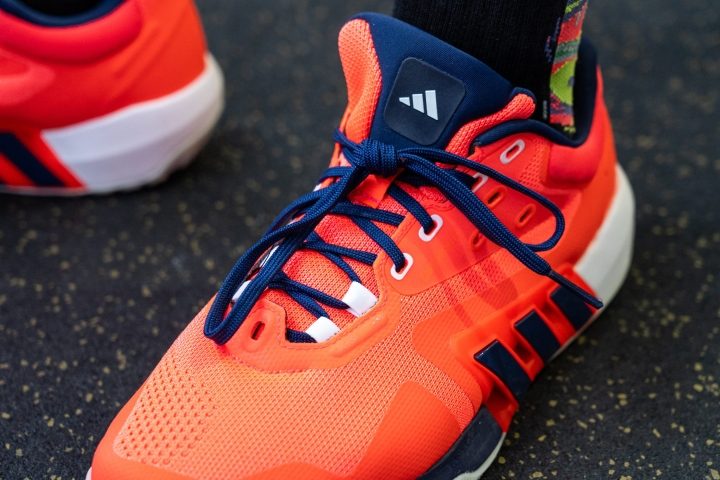
Training shoes from Adidas also stand out from the rest with their stylish non-trivial designs. This makes them a popular choice among both athletes and fashion-conscious people who want to look good while exercising. Adidas training shoes come in a variety of colors, styles, and designs, so you’re bound to find a shoe to match your personal tastes.
Adidas training shoes vs. Adidas running shoes
Adidas training shoes are made for activities such as weightlifting, HIIT, and cross-training. They incorporate more lateral support to help minimize injuries during side-to-side motions and often have a more sturdy and supporting construction.
Adidas running shoes, on the other hand, are made expressly for running and offer characteristics like a cushioned midsole and a breathable upper for support and comfort during long runs.
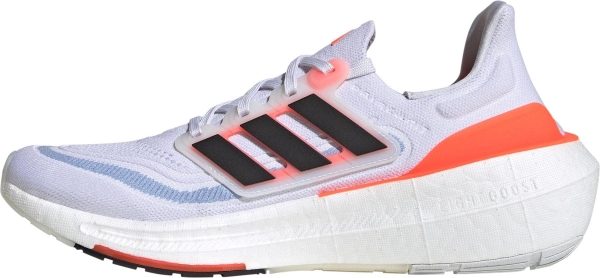
The Ultraboost Light, for example, is listed as a workout shoe on the brand's official website. However, this shoe is absolutely awful for the gym, unless all you do is run on the treadmill. Its tall and plush cushioning lacks the stability needed for cross-training activities.
